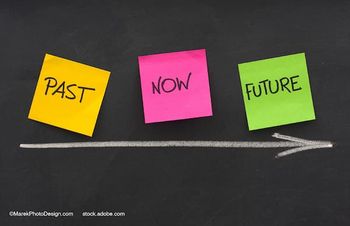
Dealing with the complications of collagen crosslinking
Audrey R. Talley Rostov, MD, discusses how patient education and hygiene is important for a positive outcome.
Reviewed by Audrey R. Talley Rostov, MD
The complications associated with collagen crosslinking (CXL) performed to treat keratoconus include infection, haze resulting from delayed epithelial healing, perforation, dry eye, ocular surface problems, and epithelial ingrowth in patients who have undergone a previous LASIK procedure, according to Audrey R. Talley Rostov, MD, who is in private practice in Seattle.
Addressing the complications of CXL
Each case requires specific treatment.
Rostov recounted the case of a patient with infectious keratitis, the most dreaded of complications after CXL , that culture identified as Staphylococcus aureus coagulase positive. Treatment with fortified vancomycin resulted in resolution in 3 weeks.
In a patient who had undergone a previous implantation of intrastromal corneal ring segments, before undergoing bilateral epithelial-on procedures, bilateral herpes simplex virus (HSV) keratitis developed and resolved with oral valacyclovir and topical ganciclovir.
“This case made me aware of the importance of questioning patients about a history of oral, ocular, or nasal HSV before CXL,” she explained.
Rostov explained that HSV can occur after CXL because UV light is directed at the cornea. In these cases, prompt treatment can lead to good outcomes.
In her practice, Rostov prescribes prophylactic valacyclovir to prevent HSV. The dose is 500 mg 3 times daily and is begun the day before CXL is planned and then continued for a few weeks after the procedure.
Patients with atopic disease also are at risk for development of HSV and bacterial keratitis. Patients should be educated about the importance of hygiene, especially good hand-washing, to avoid infections.
To avoid infections, she uses a band contact lens that is changed every 24 to 48 hours, and the patient is reexamined each time the lens is changed.
Another complication, corneal perforation, can occur as the result of brittle corneas, which also can result in infectious keratitis.
Corneas that are too thin that are less than 400 μ also can pose a problem after CXL. The Glaukos device, she noted, is approved only for use in patients with corneas that are thicker than 400 μ at the time of light treatment.
However, Rostov explained that CXL has been performed in eyes with corneas that are 300 μ to 400 μ thick. Hypotonic riboflavin is applied to cause swelling of the corneas and this approach is not associated with perforation to the best of her knowledge.
Delayed healing of the epithelium after CXL has the potential to cause haze.
“Haze should be treated aggressively with steroids,” she ssaid and recounted the case of a patient who developed significant corneal haze after CXL. Resolution was achieved with aggressive topical steroids and the patient had a very satisfactory outcome after CXL.
The key to preventing haze development is preventing delayed epithelial defects. She advised that surgeons consider amniotic membrane, serum tears, or topical steroids to treat the ocular surface.
The risk factors for progression of keratoconus include young age, eye rubbing, and high preoperative K values. Progression rates vary but generally range from 3% to 7% of cases for both epi-on and epi-off procedures.
She emphasized the following points:
• Patient education is important.
• Hygiene is important. They should avoid dusty dirty environments, be instructed to avoid eye rubbing, and perform good handwashing. Masks should be changed frequently.
• Haze should be treated aggressively with steroids; in her practice, she prescribes steroids for about a month postoperatively. Haze should not be ignored; it resolves after about 1 year.
• Dry eye disease also should be treated aggressively with lubricants to avoid delay in the healing of the epithelium. Anti-inflammatory drugs, punctal plugs, or amniotic membrane are options to treat the ocular surface.
• Surgeons should be aware of the potential for epithelial ingrowth in patients who underwent a previous LASIK procedure and then epi-off CXL. In these patients, as the epithelium heals, the tissue can go under the LASIK flap.
Audrey R. Talley Rostov, MD
This article is adapted from Rostov’s presentation at the American Society of Cataract and Refractive Surgery’s recent annual meeting in Washington, DC. She is a consultant to Glaukos.
Newsletter
Don’t miss out—get Ophthalmology Times updates on the latest clinical advancements and expert interviews, straight to your inbox.


















































.png)


